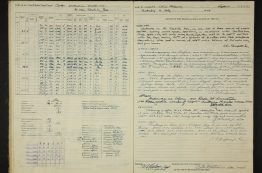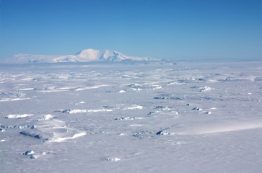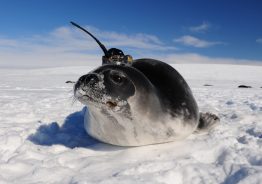With 2019 on pace as one of the warmest years on record, a new international study reveals how rapidly the Arctic is warming and examines global consequences of continued polar warming. The study, published Dec. 4 in the journal Science Advances, reports that the Arctic has warmed by 0.75 degrees C in the last decade alone. By comparison, the Earth as a whole has warmed by nearly the same amount, 0.8 C, over the past 137 years.
Read more at UW News »First evidence of human-caused climate change melting the West Antarctic Ice Sheet
A new study reveals the first evidence of a direct link between human-induced global warming and melting of the West Antarctic Ice Sheet. A research team led by the British Antarctic Survey that included the University of Washington found that curbing greenhouse gas emissions now could reduce this region’s future contribution to global sea level rise. Ongoing ice loss in West Antarctica has increased over the past few decades.
Read more at UW News »More than 100 years of Arctic sea ice volume reconstructed with help from historic ships’ logbooks
Our knowledge of sea ice in the Arctic Ocean comes mostly through satellites, which since 1979 have imaged the dwindling extent of sea ice from above. The University of Washington’s Pan-Arctic Ice Ocean and Modeling System, or PIOMAS, is a leading tool for gauging the thickness of that ice. Until now that system has gone back only as far as 1979.
Read more at UW News »Instability in Antarctic ice could make sea levels rise rapidly
One of the biggest sources of concern for scientists regarding climate change is the uncertainty surrounding melting ice sheets in the Antarctic causing rising sea levels. New research coauthored by University of Washington Earth and Space Sciences professor Gerard Roe used mathematical analysis and computer models to make projections of future sea levels, pointing to ice sheets growing unstable and flowing into the ocean sooner than expected.
Read more »Mysterious holes in Antarctic sea ice explained by years of robotic data
The winter ice on the surface of Antarctica’s Weddell Sea occasionally forms an enormous hole. A hole that appeared in 2016 and 2017 drew intense curiosity from scientists and reporters. Though even bigger gaps had formed decades before, this was the first time oceanographers had a chance to truly monitor the unexpected gap in Antarctic winter sea ice. A new study led by researchers in the UW School of Oceanography combines satellite images of the sea ice cover, robotic drifters and even seals outfitted with sensors to better understand the phenomenon.
Read more at UW News »





